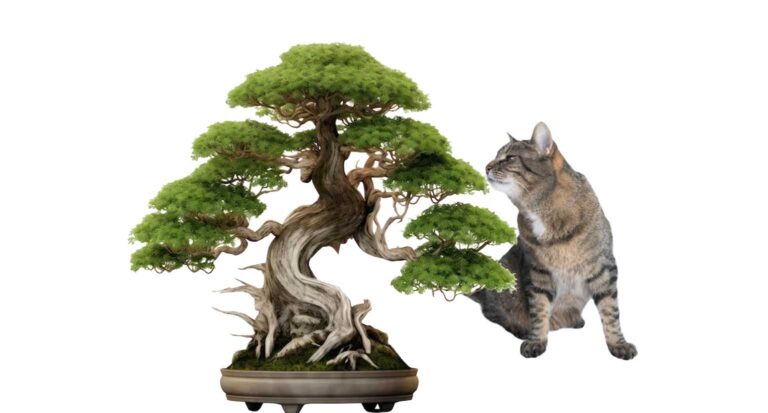Do Bonsai Trees Need Sun
Bonsai trees, miniature yet majestic, are renowned for their beauty and the sense of peace they bring to any environment.
A common query amongst bonsai enthusiasts, particularly beginners, is “do bonsai trees need sun?” This question is essential, as understanding a bonsai’s sunlight requirements is pivotal in ensuring its health and growth.
This guide will delve into this topic, shedding light on the sunlight needs and care tips for these miniature marvels.
Understanding Bonsai Trees
Bonsai trees, as with all trees, need sunlight to perform photosynthesis, the crucial process in which they convert light energy into chemical energy to fuel their growth.
The amount of sunlight required can vary based on the type of bonsai. Typically, most bonsai trees thrive best when they receive four to six hours of sunlight per day.
However, it’s worth noting that direct midday sun can sometimes be too harsh, potentially scorching the leaves. Therefore, ideal conditions often involve bright but indirect light.
Remember, bonsai trees also need a period of darkness each day to respire, which is part of their metabolic process. This cycle of light and dark aids in maintaining the health of the tree.
Sun Exposure for Bonsai Trees
When it comes to sun exposure for bonsai trees, it’s not just about the quantity, but also the quality of the light. A good rule of thumb is to aim for morning sunlight and afternoon shade.
The morning sun is less intense, allowing the tree to perform photosynthesis without risking leaf burn. During the afternoon, when the sun is at its hottest, providing shade is advisable to protect the bonsai from excessive heat and evaporation.
If you’re keeping your bonsai indoors, ensure that it’s placed near a south-facing window to get the most benefit from natural light.
However, during the winter months or in low-light conditions, supplemental lighting like a grow light might be necessary to maintain your bonsai’s health.
Always remember, the specifics can vary depending on the species of your bonsai, so it’s essential to understand the needs of your particular tree.
Bonsai Tree Light Conditions
The light conditions for a bonsai tree play a crucial role in its overall growth and development. Under ideal light conditions, the bonsai tree can efficiently carry out photosynthesis, which is paramount to its survival.
Bonsai trees generally need bright, indirect light for at least four to six hours a day. They should be protected from harsh, direct sunlight, especially during peak afternoon hours, to prevent leaf burn.
Indoor bonsai trees should be placed near a south-facing window to receive ample natural light. However, during winter or in low-light conditions, you might need to provide additional light sources like grow lights.
Remember, each bonsai species may have unique light requirements, so it’s advisable to research the specific needs of your tree to ensure it gets the proper care.
Sunlight and Bonsai Tree Growth
Sunlight is a key factor in the growth and development of a bonsai tree. It is the primary energy source for photosynthesis, the process through which the tree transforms water and carbon dioxide into the glucose it requires for growth.
Direct sunlight can foster vibrant foliage and stimulate balanced, robust growth in the bonsai. However, it’s worth noting that excessive direct sunlight can result in leaf scorch, particularly in the summer months.
The correct balance of sunlight, therefore, is crucial. Species-specific care guides can provide detailed insight into the sunlight requirements for your bonsai, helping you to optimize your tree’s exposure to natural light for the best possible growth.
Bonsai Tree Sun Tolerance
Each species of bonsai tree has a different level of tolerance to sunlight. Some species are highly sun-tolerant and can thrive in direct, hot sunlight for most of the day.
These include species like the Juniper bonsai which can endure full sun exposure without suffering from leaf burn. Conversely, some species such as the Azalea bonsai, are less tolerant and prefer dappled sunlight or partial shade.
It’s essential to understand your bonsai’s sunlight tolerance to provide it with the appropriate light conditions.
Overexposure to sunlight can lead to sunburn, faded leaf color, and even death of the tree. On the contrary, inadequate sunlight can result in weak, leggy growth and a lack of vitality. Thus, understanding and respecting a bonsai tree’s sun tolerance is crucial for maintaining a healthy and aesthetically pleasing tree.
Sunlight Tips for Bonsai Enthusiasts
Understand Your Bonsai’s Species:
The sunlight requirements of bonsai trees vary significantly depending on the species. It’s crucial to gain a deep understanding of your bonsai’s specific needs.
Monitor Sun Exposure
Ensure your bonsai gets the right amount of sunshine every day. Too much or too little sun can harm your tree. Use a light meter if necessary to assess the light levels in your bonsai’s location.
Rotate Your Bonsai
Rotate your bonsai regularly. This promotes even growth as all sides of the tree get equal exposure to sunlight.
Use a Shade Cloth
If your bonsai is in an area of intense sun, consider using a shade cloth. This can protect your tree from the extreme heat and light of the summer sun.
Indoor Bonsai Trees
If you’re growing your bonsai indoors, place it near a south-facing window for maximum sun exposure. You might also consider supplemental lighting during winter months or in dark rooms.
Conclusion
Mastering the art of bonsai care can be a rewarding endeavor. Understanding your tree’s specific light requirements is an essential step toward ensuring its health and vitality.
By monitoring sun exposure, rotating your tree, using shade cloth, and providing supplemental lighting when necessary, you can create an optimal environment for your bonsai.
Remember, every tree is unique – respect its individual needs, and it will reward you with its beauty and longevity. As you continue your bonsai journey, may you find joy and fulfillment in this ancient and captivating tradition.







